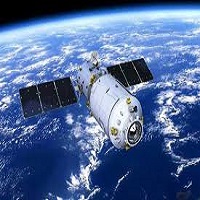
Chinese space station Tiangong-1 has returned to Earth, crashing into the South Pacific
After two years of unmanned cruising in orbit, the Chinese space station Tiangong-1, or “heavenly palace” in Mandarin, has finally fallen out, crashing into the Earth’s atmosphere. At 8:16pm Eastern time on Sunday, the school-bus sized craft plummeted into the southern Pacific Ocean, the United States Joint Force Space Component Command has confirmed.
The crash ends weeks of speculation about when, and where, the space station might return to Earth in a fiery finale. Even in the days leading up to the crash, no one could predict the spot of the final plunge, leading to a worldwide guessing game.
Farewell, Tiangong-1: Chinese Space Station Meets Fiery Doom Over South Pacific
China’s prototype space station, whose name translates as “Heavenly Palace 1,” met a fiery end in Earth’s atmosphere today (April 1), breaking apart and burning up in the skies over the southern Pacific Ocean at about 8:16 p.m. EDT (0016 April 2 GMT), according to the U.S. Strategic Command’s Joint Force Space Component Command (JFSCC).
Falling Chinese Space Station Spotted by Skywatcher on Eve of Crash
Around and around it goes, when and where it stops, nobody knows. China’s Tiangong-1 space station is making its last orbits around Earth and a skywatcher in Oklahoma has captured one last video of the space lab before its inevitable crash
As it happened: All eyes on Chinese space station Tiangong-1 as it plummets to Earth
An out-of-control Chinese space station the size of a school bus has mostly burnt up on re-entry over the Pacific ocean.
Tiangong-1 dramatically CRASHES INTO EARTH
THE CHINESE space station Tiangong-1 has crash landed on Earth, landing north-west of Tahiti in a dramatic plunge after sweeping over nations across the globe, it has emerged.
.






